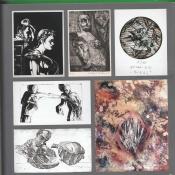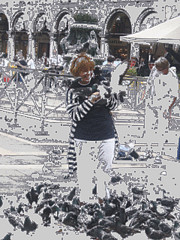Announcing the 2015 Laureate - Santiago Calatrava - Spain/Swiss
Europe’s Highest Award Presented at an Award Ceremony to be held at the World Trade Center in New York on November 17
One of the world's foremost visionary, utopian, and iconic architects today, Santiago Calatrava Valls, has been named as this year’s recipient of the European Prize for Architecture, awarded by The Chicago Athenaeum: Museum of Architecture and Design, together with The European Centre for Architecture Art Design and Urban Studies.
http://www.calatrava.com/projects.html?all=yes
The European Prize for Architecture is given every year to a singular European architect who has "emblazoned a path to a more humane and intellectual direction in architecture today."
One of the world's foremost visionary, utopian, and iconic architects today, Santiago Calatrava, has been named as this year’s recipient of the European Prize for Architecture, awarded by The Chicago Athenaeum: Museum of Architecture and Design, together with The European Centre for Architecture Art Design and Urban Studies.
The European Prize for Architecture is Europe’s most prestigious prize given annually to architects who have blazoned a new path and direction for an architecture that is deeply humane and committed to forward the principles of European humanism.
Known for his flowing, curved buildings, he uses steel, concrete, and new computer modelling to create compositions that appear at once natural and structurally impossible. His compositions convey a sense of direction and movement.
"In this sense," states Narkiewicz-Laine, Museum President, The Chicago Athenaeum, "the Spanish-born architect Calatrava is more than just an architect. He is a visionary theorist, philosopher, and utopian and a true artist in the craft of engineering and architectonic expressionism. His buildings are not just 'building.' They are powerful works of art; inspired by a master's gifted hand and sculpted by a superior, critical eye; immensely evocative and fiercely intellectual."
“It is significant that The European Prize for Architecture honours Calatrava as an architect, engineer, sculptor, and painter,” Narkiewicz-Laine adds.
“Calatrava has sealed the deal on the long-standing modernist debate as to whether ‘architecture is engineering’ or ‘architecture is an art,’" continues Narkiewicz-Laine. “For decades, modern architects sneered at any close association with the practice of architecture as being an ‘art form,’ but instead based their professional designing pursuits on pure engineering. Even art-inspired architects as Hassan Fathy and a host of South American architects, including Luis Barragán, have held themselves out to be total engineers. For this singular architect practitioner, architecture is engineering and is definitively art. In Calatrava, we see all three disciplines seamlessly merging into the one practice of architecture with no distinctions or any separations whatsoever.”
“And truly, this architect is a most celebrated and accomplished and powerful contemporary artist.”
“His free-flowing, fluid sketches and ink washes, sometimes of Matisse-like figures dancing in mid-air, are a stark contrast to the rigid and forceful geometry of his buildings. In paintings, Minoan-like bulls stampede across canvasses and pottery that appears as if they were recently unearthed from a 6th –Century AD archaeological site on a Greek island. ‘They keep me thinking about form, shape, density; they keep me sharp. They are all studies for buildings,’ he has often stated.”
“To Calatrava, painting is the genesis of his creative process; his brush as important as the computer software on which his buildings are eventually drafted, twisted, and manipulated. His initial sketches for buildings are loosely conceived; drawings are largely spontaneous. His drawings are made by an artist seeking forms of artistic expression, but embracing engineering as a way of thinking.”
“He regularly traverses the lines between art and architecture; his buildings are frequently called sculptural, while his sculptures and paintings are like sketches of buildings,” continues Narkiewicz-Laine.
Many of the themes and forms that Calatrava investigates on this level are then transformed into sculptures or provide the basis of inspiration for his buildings.










